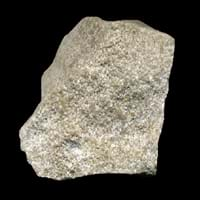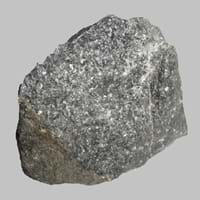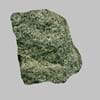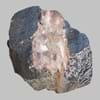Definition
Oolite is a sedimentary rock formed from ooids, spherical grains which are composed of concentric layers of calcite
Andesite is a dark, fine-grained, brown or greyish intermediate volcanic rock which is a commonly found in lava
Origin
Unknown
North America
Discoverer
Unknown
Unknown
Etymology
From oo- + -lite, after German Oolit. A rock consisting of fine grains of carbonate of lime
From Andes mountains, where it is found in abundance
Class
Sedimentary Rocks
Igneous Rocks
Sub-Class
Durable Rock, Medium Hardness Rock
Durable Rock, Hard Rock
Other Categories
Fine Grained Rock, Opaque Rock
Fine Grained Rock, Opaque Rock
Texture
Clastic or Non-Clastic
Aphanitic to Porphyritic
Color
Black, Blue, Brown, Cream, Green, Grey, Pink, Red, Silver, White, Yellow
Bluish - Grey, Grey, Pink, Yellow
Durability
Durable
Durable
Scratch Resistant
Yes
Yes
Appearance
Rounded and Rough
Dull and Soft
Interior Uses
Decorative Aggregates, Flooring, Interior Decoration
Decorative Aggregates, Floor Tiles, Homes, Interior Decoration, Kitchens
Exterior Uses
As Building Stone, As Facing Stone, Garden Decoration, Paving Stone
Office Buildings, Roof Tiles
Other Architectural Uses
Not Yet Used
Curbing
Construction Industry
Cement Manufacture, Cobblestones, Landscaping
Cobblestones, Construction Aggregate, for Road Aggregate
Medical Industry
Not Yet Used
Not Yet Used
Antiquity Uses
Artifacts
Artifacts, Monuments, Sculpture, Small Figurines
Commercial Uses
Creating Artwork, Jewelry, Used in aquariums
Commemorative Tablets, Creating Artwork
Types
Not Available
Icelandite
Features
Available in lots of colors, Generally rough to touch, Very fine grained rock
Generally rough to touch, High silica content, Is one of the oldest rock
Archaeological Significance
Monuments
Not Yet Used
Used
Famous Monuments
Not Applicable
Middle of the Earth in Ecuador
Sculpture
Not Yet Used
Used
Famous Sculptures
Not Applicable
Data Not Available
Pictographs
Used
Not Used
Petroglyphs
Used
Not Used
Figurines
Not Yet Used
Used
Formation
Oolites form when layers of calcite are deposited around a sand grain or fossil piece and are rolled around in calm water, which makes them round.
Andesite is a fine-grained igneous rock that forms when the magma is erupted onto the surface and is crystallized quickly.
Mineral Content
Calcite, Chert, Clay, Dolomite, Quartz, Sand, Silt
Amphibole, Apatite, Biotite, Feldspar, Garnet, Hornblade, Ilmenite, Magnetite, Plagioclase, Pyroxene, Zircon
Compound Content
Aluminium Oxide, Ca, NaCl, CaO, Iron(III) Oxide, FeO, MgO
Silicon Dioxide
Types of Metamorphism
Not Applicable
Burial Metamorphism, Cataclastic Metamorphism, Contact Metamorphism, Hydrothermal Metamorphism, Impact Metamorphism, Regional Metamorphism
Types of Weathering
Biological Weathering, Chemical Weathering, Mechanical Weathering
Biological Weathering, Chemical Weathering, Mechanical Weathering
Types of Erosion
Chemical Erosion, Coastal Erosion
Chemical Erosion, Coastal Erosion, Glacier Erosion
Grain Size
Fine Grained
Very fine-grained
Fracture
Conchoidal
Uneven
Porosity
Less Porous
Less Porous
Luster
Pearly to Shiny
Vitreous
Compressive Strength
Not Available
Cleavage
Non-Existent
Not Available
Specific Gravity
Not Available
2.5-2.8
Transparency
Opaque
Opaque
Density
Not Available
2.11-2.36 g/cm3
Specific Heat Capacity
Not Available
Resistance
Heat Resistant, Wear Resistant
Heat Resistant, Pressure Resistant, Wear Resistant
Deposits in Eastern Continents
Asia
Brunei, India, Indonesia, Malaysia, Singapore, Thailand, Vietnam
India, Indonesia, Japan, Nepal, South Korea
Africa
Cameroon, Chad, Ghana, Kenya, Malawi, Sudan, Tanzania, Togo, Zambia, Zimbabwe
Egypt, Ethiopia, Morocco, Namibia, South Africa, Tanzania
Europe
United Kingdom
Austria, Finland, Germany, Italy, Romania, Turkey, United Kingdom
Others
Not Yet Found
Not Yet Found
Deposits in Western Continents
North America
USA
Mexico, USA
South America
Colombia
Argentina, Bolivia, Chile, Colombia, Ecuador, Peru, Venezuela
Deposits in Oceania Continent
Australia
Adelaide, New Zealand, Queensland, Tonga, Victoria, Yorke Peninsula
New South Wales, New Zealand, Western Australia
All about Oolite and Andesite Properties
Know all about Oolite and Andesite properties here. All properties of rocks are important as they define the type of rock and its application. Oolite belongs to Sedimentary Rocks while Andesite belongs to Igneous Rocks.Texture of Oolite is Clastic or Non-Clastic whereas that of Andesite is Aphanitic to Porphyritic. Oolite appears Rounded and Rough and Andesite appears Dull and Soft. The luster of Oolite is pearly to shiny while that of Andesite is vitreous. Oolite is available in black, blue, brown, cream, green, grey, pink, red, silver, white, yellow colors whereas Andesite is available in bluish - grey, grey, pink, yellow colors. The commercial uses of Oolite are creating artwork, jewelry, used in aquariums and that of Andesite are commemorative tablets, creating artwork.










